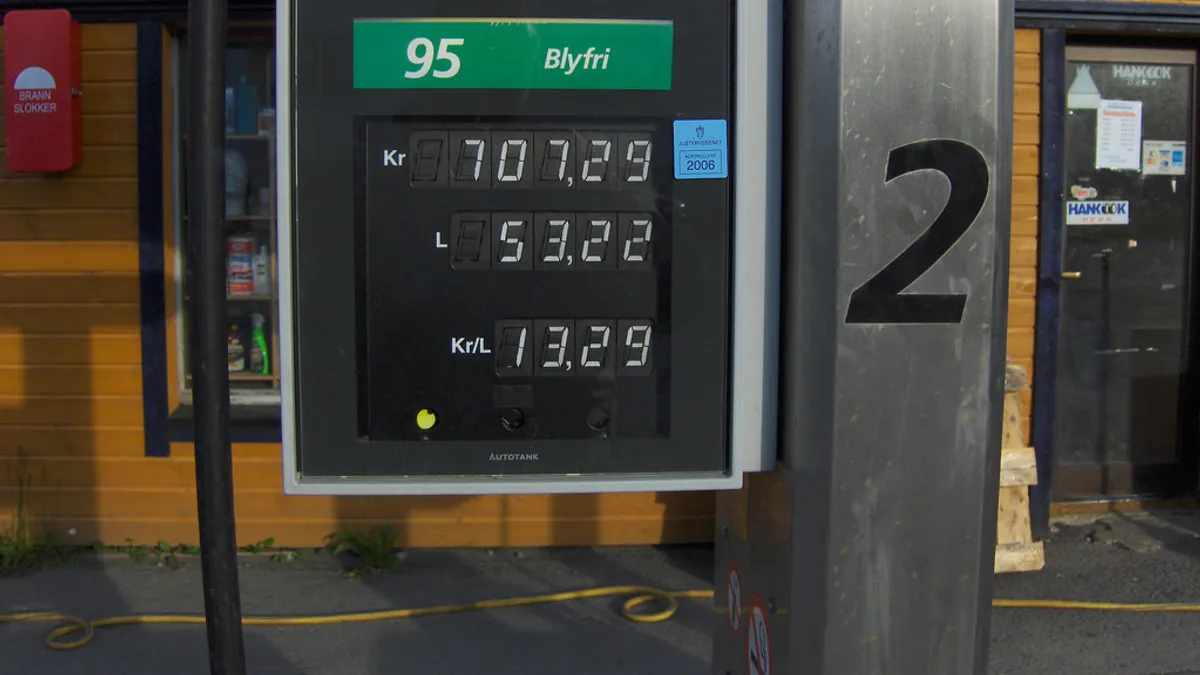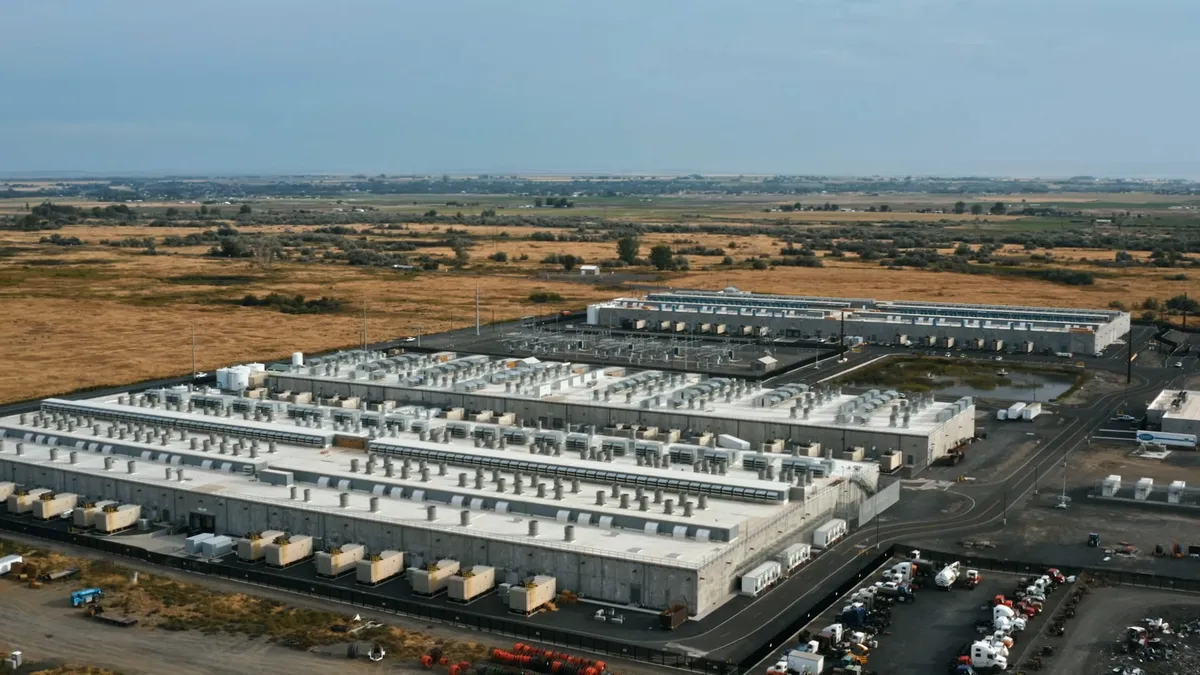Craig Stevenson is searching for a baseline. The executive vice president of his family-owned business, Carnegie, PA-based James Construction, Stevenson has focused his career on integrated, building performance-based solutions for residential and commercial projects across the Mid-Atlantic. His interest in passive and energy-efficient construction led to the launch of Energy Assurance Solutions, an AEC industry consultancy focused in part on the development of a market-driven performance standard for energy-efficient construction and building operations.
Navigating the arena of energy service companies, the Environmental Protection Agency’s Energy Star program and private certification systems including the U.S. Green Building Council’s LEED and the Global Real Estate Sustainability Benchmark, Stevenson is convinced the construction industry needs to develop a contextual baseline for measuring building efficiency against design strategy.
One thing he’s certain of? Building to code isn’t it.
That’s because the International Energy Conservation Code is voluntary. Updated every three years (the 2018 code was approved in December 2016), the IECC code can be adopted by state and local jurisdictions, which in turn are responsible for enforcing the standard in commercial and residential construction.
For construction professionals, whether the IECC has a business impact at all is at best a location-by-location question. With a preponderance of projects already being designed to meet LEED or other energy efficiency standards, the impact to both operations and the environment could be negligible. “Codes are a late follower and in some ways a broken system,” Stevenson said, noting that states like North Carolina are building beyond the 2012 IECC in places and have some of the more energy-efficient buildings by start volume that he has seen across his markets.
When it comes to energy, state and federal policies will trump code in 2017, with emissions standards, fuel costs, and the investment in and improvement of infrastructure all significantly impacting the profitability of construction businesses. Many expect technology — including the use of GPS, LiDAR, autonomous vehicles and drones — to help the AEC industry best optimize operations and protect margins as it continues to embrace energy efficiency in the built environment.
Energy efficiency by mandate
Energy and fuel costs are a key component in construction project budgeting, bidding and operations. “It’s a line item that crosses several level line items and reaches deeply into operations, from lighting and heating to fuel consumption for heavy equipment in the process of construction and vehicles transporting materials and personnel to the construction site," said Tom Holsman, CEO of the Associated General Contractors of California.
According to the U.S. Energy Information Administration, the U.S. construction industry will consume 316 trillion British thermal units of diesel fuel in 2017. At 137,381 Btus to the gallon, that's 2.3 trillion gallons of diesel fuel consumption nationally.
"Costs have to be paid by someone. Business owners are typically passing those costs on through the project. That is the process and the food chain you have to look at when you impose (energy and emissions) regulations."

Tom Holsman
CEO, Associated General Contractors of California
Among AGC California’s 1,000 members, Holsman said, many firms have moved to incorporate electric vehicles into light-duty fleets to lower fuel costs, while all member companies, and indeed all contractors in the state of California, have adopted clean diesel Tier 1 engines as required by the California Air Resources Board, Holsman said, adding that they provide emission and consumption standards "far superior" to any previously built engines.
While fuel efficiency has been a recognized benefit of electric and clean-diesel engine adoption for California construction pros, the total cost benefit has been difficult to pinpoint for firms required to make huge capital investments for fleet upgrades. What’s more, those investment costs were likely passed on through project budgets, further clouding the cost–benefit analysis for electronic vehicles and hybrid engine technology adoption.
“Costs have to be paid by someone,” Holsman said. “Business owners are typically passing those costs on through the project. That is the process and the food chain you have to look at when you impose (energy and emissions) regulations.”
Drone-optimized fuel consumption
Autonomous and GPS-enabled equipment and drone technology can also reduce energy costs by optimizing machine idle and in-motion time on the job site.
Ernie Hanna is a principal for Norwood, MA-based GZA, a provider of geotechnical, environmental, water, ecological and construction management services across the eastern U.S. While Hanna is uncertain about the impact of the 2018 IECC to GZA projects and clients, he said technology to optimize equipment run-times will be a major area of focus in 2017, particularly for excavation and “ground down” earthworks and grid/utility work for job sites.
“The really interesting thing on the construction side related to energy efficiency is the use of autonomous vehicles and the greater implementation of bulldozers and backhoes using GPS systems to fine tune how they move earth,” Hanna said. “As the excavation process has become more tech-focused, it has become much more efficient.”
Hanna said the use of drone imaging technologies and LiDAR in particular for volumetric data calculations has led to significant cost savings by optimizing excavation routes and minimizing the uptime of heavy equipment for earthworks projects. “Combined with GPS-enabled vehicles and equipment, that data enables the individual operating the device to take one pass through as opposed to several passes, and practically eliminates the need to put material back in or bring a surveyor on the site in between passes (to correct for inefficiencies).”
While Hanna expects fully autonomous equipment to see broader adoption in heavy excavation projects this year, site safety and project budgets rather than fuel efficiency will dictate where and when GCs opt for self-driving dozers and backhoes.
“It will still be much more common to see a manned vehicle connected to GPS, with full autonomy happening on larger sites, as we’re talking about a big piece of equipment to be running around by itself,” Hanna said. On the fuel side, the machines are pilot-neutral, with geo-location providing consumption efficiency regardless of whether machine or man is steering the iron.
Win-win infrastructure investments
Federal policy informing infrastructure investments in 2017 and beyond will have a more substantial impact on construction operations for the built environment than will the adoption of updated IECC codes. Although details are still forthcoming and economists remain skeptical, the Trump administration’s $1 trillion plan to improve the nation’s network of roads, tunnels, bridges and public works would not only put a wide range of heavy civil contractors to work, it also promises to reduce macro costs to the industry as firms realize greater fuel efficiency, lower transportation expenditures and improved equipment longevity.
“Infrastructure investment isn’t just good for the transportation of goods and services. As you improve bridge and highway and asphalt conditions, you improve on fuel efficiency and vehicle wear and tear,” Holsman said. “So the investment in infrastructure has a multiple layered benefit not just in terms of economics but in terms of the environment and fuel efficiency. We’re pushing hard for infrastructure investment.”
The Trump administration's policies could also clear the way for more pipeline and fossil-fuel related construction projects, benefiting regional construction economies with increased infrastructure investment for those initiatives. “The Philadelphia area has been pushing for the past year or two to enhance its image as an energy hub, and that’s something a Trump administration energy policy could help benefit," Hanna said. “I see some relaxation of regulations for pipeline approvals that could mitigate the NIMBYism and environmental impact assessments stalling those projects.”
"Infrastructure investment isn’t just good for the transportation of goods and services. As you improve bridge and highway and asphalt conditions, you improve on fuel efficiency and vehicle wear and tear."

Tom Holsman
CEO, Associated General Contractors of California
Ultimately, the market will likely decide where the construction industry moves in terms of energy efficiency measures from both an operational and a product development standpoint. Stevenson said too much progress has been made by the U.S. Army Corps of Engineers, the General Services Administration and the National Renewable Energy Laboratory in terms of embracing green building for any substantial fallback in building and construction energy efficiency as a result of the incoming administration's policy.
“I think everyone agrees the EPA is going to take a hit and a lot of regulations will be removed or reduced, but the big federal property owners get it, and have changed the paradigm of how we build,” Stevenson said. “The markets — not the codes or policy — will dictate and drive where construction goes next. They can kill the EPA and the regs, but they won’t be able to change the progress that has been made.”
"If we're just testing active systems and don’t test our building envelope, its like leaving your windows open and touting how efficient your HVAC system is."

Craig Stevenson
Executive vice president, James Construction
Stevenson, for one, hopes the industry will begin to embrace EUI as a baseline metric for measuring efficiency as it incorporates a whole-building and whole-systems analysis. While LEED is a great start towards that end, he said, it doesn't go far enough to account for energy efficiency in operations once buildings are complete. As more investors build to LEED standards without pursuing official certification, the commissioning required to verify that buildings are reaching the efficiency thresholds they've been designed to achieve isn't happening.
"The problem is that there is of yet no market-driven performance standard akin to miles per gallon in the automotive industry — a correct whole building energy model that tells me in real time if I am winning or losing relative to my design intent," Stevenson said. "We think it should be EUI and should be measured during construction, at commissioning and across the life cycle of the building. If we're just testing active systems and don’t test our building envelope, its like leaving your windows open and touting how efficient your HVAC system is."






















